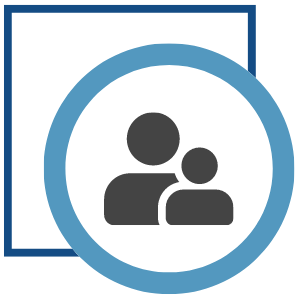On This Page
There are various ways of paying for college. Student financial aid can include college scholarships, student loans, grants, or work study. Here we will talk about the different types of federal and private loans available.
Federal Loans
There are two types of federal student loan programs: Direct Loans and FFELP Loans. Learn more about different types of federal student aid at StudentAid.gov/loans.
William D. Ford Federal Direct Loan Program Loans (Direct Loans)
As of July 1, 2010, all federal student loans are funded by the federal government through the Federal Direct Loan Program. Loan types include Direct Subsidized, Direct Unsubsidized, Direct Parent PLUS, Direct Graduate Student PLUS (GradPLUS) loans, and Direct Consolidation loans. These student loans have low interest rates and flexible repayment terms. There are a limited number of organizations designated by the U.S. Department of Education to service these loans. If you have Direct Loans, your billing statement will reference “Direct”.
Federal Family Education Loan Program Loans (FFELP Loans)
FFELP loans were available through private lenders prior to July 1, 2010 (you may have chosen a private lender from a list when you originated your loan) and were guaranteed by the federal government. FFELP loan types include Subsidized and Unsubsidized, Parent PLUS, GradPLUS, and Consolidation loans. FFELP loans have similar terms and conditions to Direct Loans, but there are some differences in repayment plans, loan forgiveness programs, borrower benefits, and interest rates.
You may choose to consolidate FFELP and/or Perkins Loans into the Direct Loan program in order to take advantage of loan options available only to Direct Loan customers, such as Public Service Loan Forgiveness (PSLF) or additional repayment plans, such as Revised Pay As You Earn (REPAYE). Loan consolidation provides access to additional options but may result in the loss of certain benefits so we encourage you to visit StudentAid.gov/manage-loans/consolidation to learn about the pros and cons of consolidating your loans.
Private Student Loans
Not guaranteed by the federal government, private loans are similar to bank loans, and their interest rates may be based on an index, such as Prime or LIBOR. The interest rate for private loans will depend on the borrower’s, and sometimes the co-borrower’s, credit history. Private loans are intended to close the gap between the amount students can borrow under the federal student loan programs and the cost of higher education.
As you determine the best way to finance your education, you should consider the full range of student financial aid options available to you. Private loans are often used to supplement federal student loans, when federal loans are not sufficient to cover the full cost of education.
Private student loans also offer students flexibility in choosing a school or participating in a specialized course of study when federal student loans aren’t an option. You will need to work with your school to make informed decisions about which sources of funding are right for you.
Private student loans are for students (at the age of majority), parents of students, other guardians or credit-worthy related co-signers or “co-makers”. While many alternative student loan programs require strict, non-negative credit and evidence of repayment capacity, individuals can sometimes borrow from $2,000 up to $15,000 and more per academic year based on cost of attendance minus other financial aid awarded. Interest rates for private student loans are generally variable student loan interest rates adjusted quarterly based on an index plus some percentage.
Additional Resources
- Federal Student Loan Comparison Chart
- Interest Rates for Federal Student Loans
- If you’re still not sure of your loan type, please contact us for assistance.





